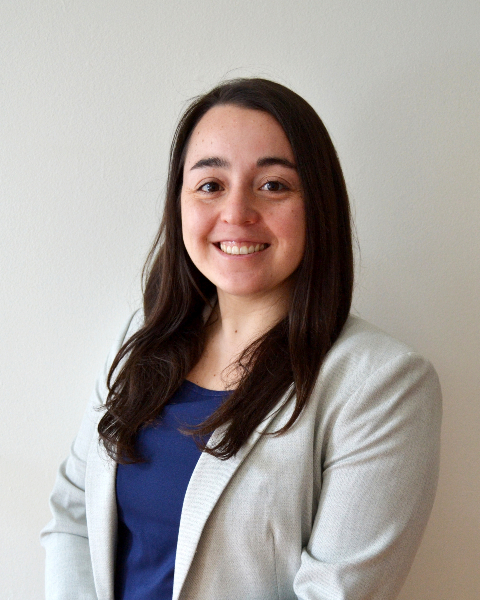PQA 07 - PQA 07 Gastrointestinal Cancer and Sarcoma/Cutaneous Tumors Poster Q&A
3040 - Patient-Reported Outcomes in Rectal Cancer: A Prospective Study of Treatments with Chemoradiotherapy Alone or Followed by Surgery
Tuesday, October 1, 2024
12:45 PM - 2:00 PM ET
Location: Hall C
Screen: 4

Constanza Martinez, MD, PhD
McGill University Health Centre
Montreal, QC
Presenter(s)
C. Martinez1,2, A. Garant3, M. Buotros2,4, C. A. V. Vasilevsky2,4, A. Pang2,4, N. Morin2,4, K. Ma2,4, S. Bukera2, M. Lecavalier2,4, and T. Vuong2,4; 1McGill University Health Centre, Montreal, QC, Canada, 2Jewish General Hospital, Montreal, QC, Canada, 3Department of Radiation Oncology, UT Southwestern Medical Center, Dallas, TX, 4McGill University, Montreal, QC, Canada
Purpose/Objective(s): Rectal cancer local control and outcomes have significantly improved with the combined used of neoadjuvant chemoradiotherapy (CRT) and total mesorectal excision (TME). This prospective study aims to evaluate the long-term incidence and severity low anterior resection syndrome (LARS) in patients undergoing CRT followed by TME and CRT-alone. Materials/
Methods: This study included all patients who received CRT followed by TME and underwent a lower anterior resection, as well as those treated solely with CRT. Assessments for low anterior resection syndrome (LARS) were conducted at baseline, 0-6 months, 7-12 months, and 13-24 months, utilizing validated questionnaires that categorized LARS into three groups: no LARS (0-20 points), minor LARS (21-29 points), and major LARS (=30 points). Statistical analyses were performed using unpaired two-tailed t-tests, and significance was determined with a p-value < 0.05.
Results: A total of 40 patients underwent CRT+TME, while 41 patients received CRT-alone. The median age was 62.5 years and 62 years for patients treated with CRT+TME and CRT-alone, respectively. Baseline comparisons of patients treated with CRT + TME vs CRT with no LARS 40% vs 44.1%, minor LARS 20% vs 26.1%, and major LARS 40% vs 26.5% (p=0.28). At 0-6 months, CRT + TME vs CRT revealed no LARS 20% vs 46.2%, minor LARS 26.7% vs 15.4%, major LARS 53.4% vs 38.5% (p=0.9). At 7-12 months, CRT + TME vs CRT exhibited no LARS 44.4% vs 70%, minor LARS 33.3% vs 10%, major LARS 22.2% vs 20% (p=0.34). At 13-24 months, CRT + TME vs CRT demonstrated no LARS 18.2% vs 54.5%, minor LARS (36.4% vs 36.4%), major LARS 45.5% vs 9.1% (p=0.04*).
Conclusion: Patient-reported outcomes showed that the LARS incidence and severity at 2 years was significantly higher in patients treated with CRT followed by TME compared to those treated with CRT-alone. These findings are promising, implying that a non-operative approach may offer a superior quality of life compared to the conventional TME surgery.
Purpose/Objective(s): Rectal cancer local control and outcomes have significantly improved with the combined used of neoadjuvant chemoradiotherapy (CRT) and total mesorectal excision (TME). This prospective study aims to evaluate the long-term incidence and severity low anterior resection syndrome (LARS) in patients undergoing CRT followed by TME and CRT-alone. Materials/
Methods: This study included all patients who received CRT followed by TME and underwent a lower anterior resection, as well as those treated solely with CRT. Assessments for low anterior resection syndrome (LARS) were conducted at baseline, 0-6 months, 7-12 months, and 13-24 months, utilizing validated questionnaires that categorized LARS into three groups: no LARS (0-20 points), minor LARS (21-29 points), and major LARS (=30 points). Statistical analyses were performed using unpaired two-tailed t-tests, and significance was determined with a p-value < 0.05.
Results: A total of 40 patients underwent CRT+TME, while 41 patients received CRT-alone. The median age was 62.5 years and 62 years for patients treated with CRT+TME and CRT-alone, respectively. Baseline comparisons of patients treated with CRT + TME vs CRT with no LARS 40% vs 44.1%, minor LARS 20% vs 26.1%, and major LARS 40% vs 26.5% (p=0.28). At 0-6 months, CRT + TME vs CRT revealed no LARS 20% vs 46.2%, minor LARS 26.7% vs 15.4%, major LARS 53.4% vs 38.5% (p=0.9). At 7-12 months, CRT + TME vs CRT exhibited no LARS 44.4% vs 70%, minor LARS 33.3% vs 10%, major LARS 22.2% vs 20% (p=0.34). At 13-24 months, CRT + TME vs CRT demonstrated no LARS 18.2% vs 54.5%, minor LARS (36.4% vs 36.4%), major LARS 45.5% vs 9.1% (p=0.04*).
Conclusion: Patient-reported outcomes showed that the LARS incidence and severity at 2 years was significantly higher in patients treated with CRT followed by TME compared to those treated with CRT-alone. These findings are promising, implying that a non-operative approach may offer a superior quality of life compared to the conventional TME surgery.
